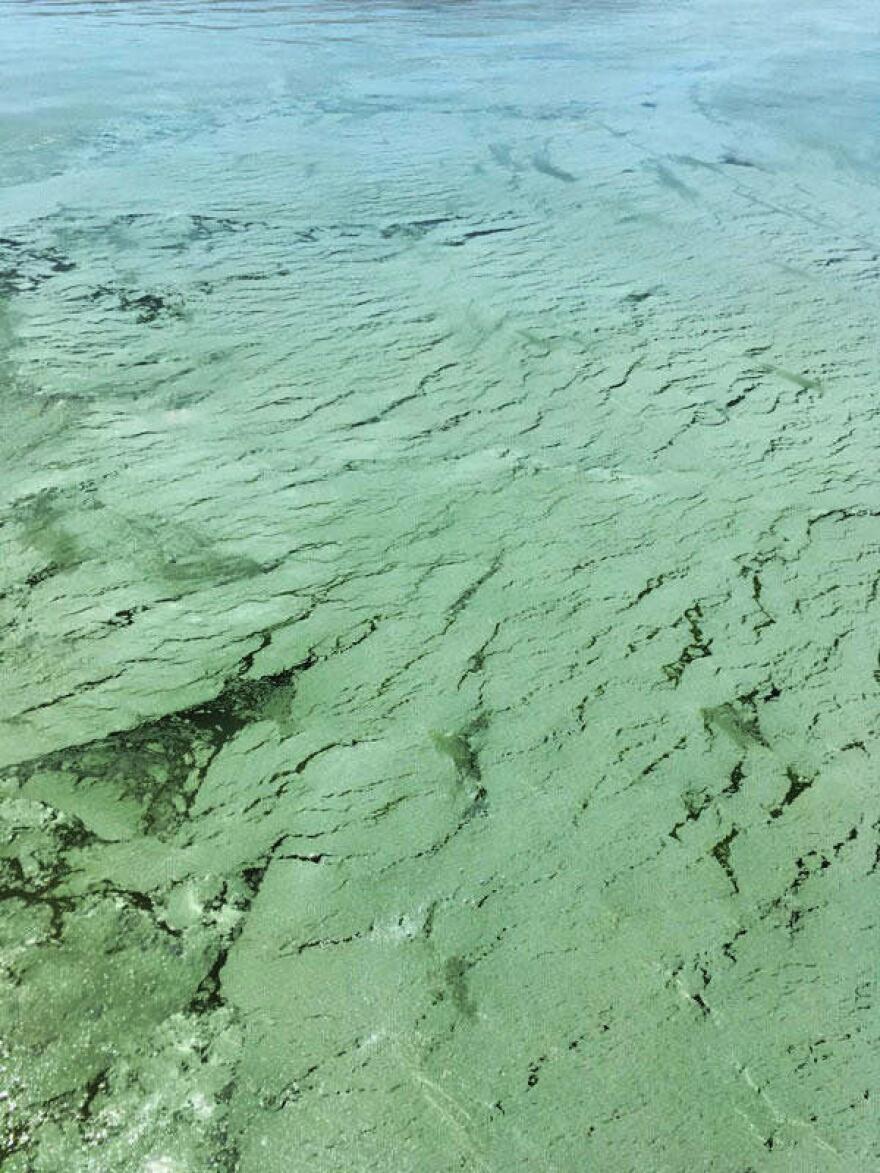Seventy-five-thousand dollars. That’s the sum the state paid for two week’s worth of testing at Utah Lake during the height of last month’s cyanobacteria outbreak. July’s heat combined with pollution from runoff and sewer plants created a poisonous stew of toxic bacteria and thick mats of green sludge. Health and environment officials fielded hundreds of calls.
Then, after a brief pause, state regulators began fielding new reports of toxic algae in Utah Lake. And now there are reports of algal blooms in Payson Lakes and Scofield Reservoir.
Jodi Gardberg, manager of the Utah Division of Water Quality’s Standards and Technical Service Section, says the impacts have been eye opening.
“Initially, we just didn’t know the extent of where all this water would go and how many people it would effect,” she told the state water quality board Wednesday. “It tells you how important Utah Lake is as a water source and water quality in Utah Lake.”
The algal bloom made dogs and people sick. It temporarily shut down irrigation. It closed one beach and triggered caution advisory for the entire lake. The water board approved spending $1 million dollars to learn what’s causing the blooms and how to stop them. But it’s not clear that will be enough.
“There are some other factors contributing to algal blooms,” said Ramesh Goel of the University of Utah’s Department of Environmental and Civil Engineering.
“And my comment is, in fact, $1 million will not be sufficient.”
Goel pointed out the lake system is complex.
And the politics of the situation aren’t simple either. Government agencies don’t control the weather or water levels, which are big factors in the blooms. And, while pollution can be regulated, upstream communities worry about the expense of upgrading their sewage and stormwater facilities.






